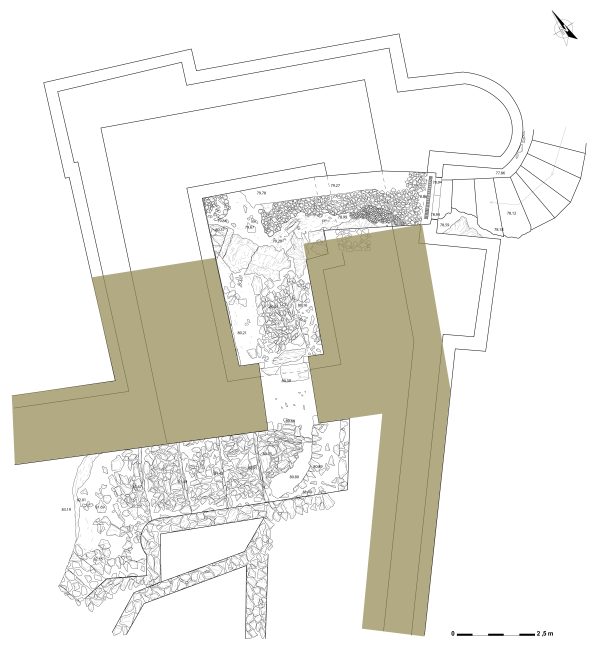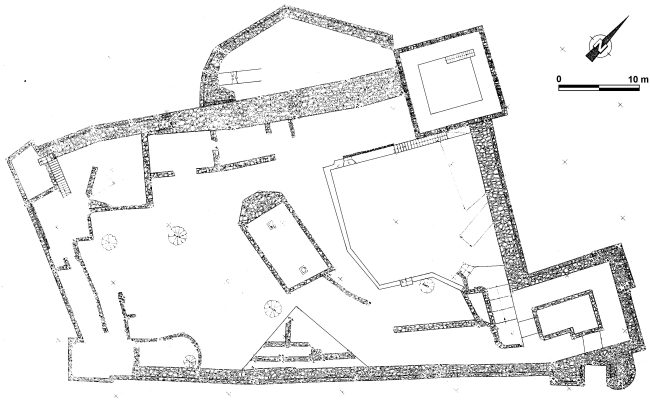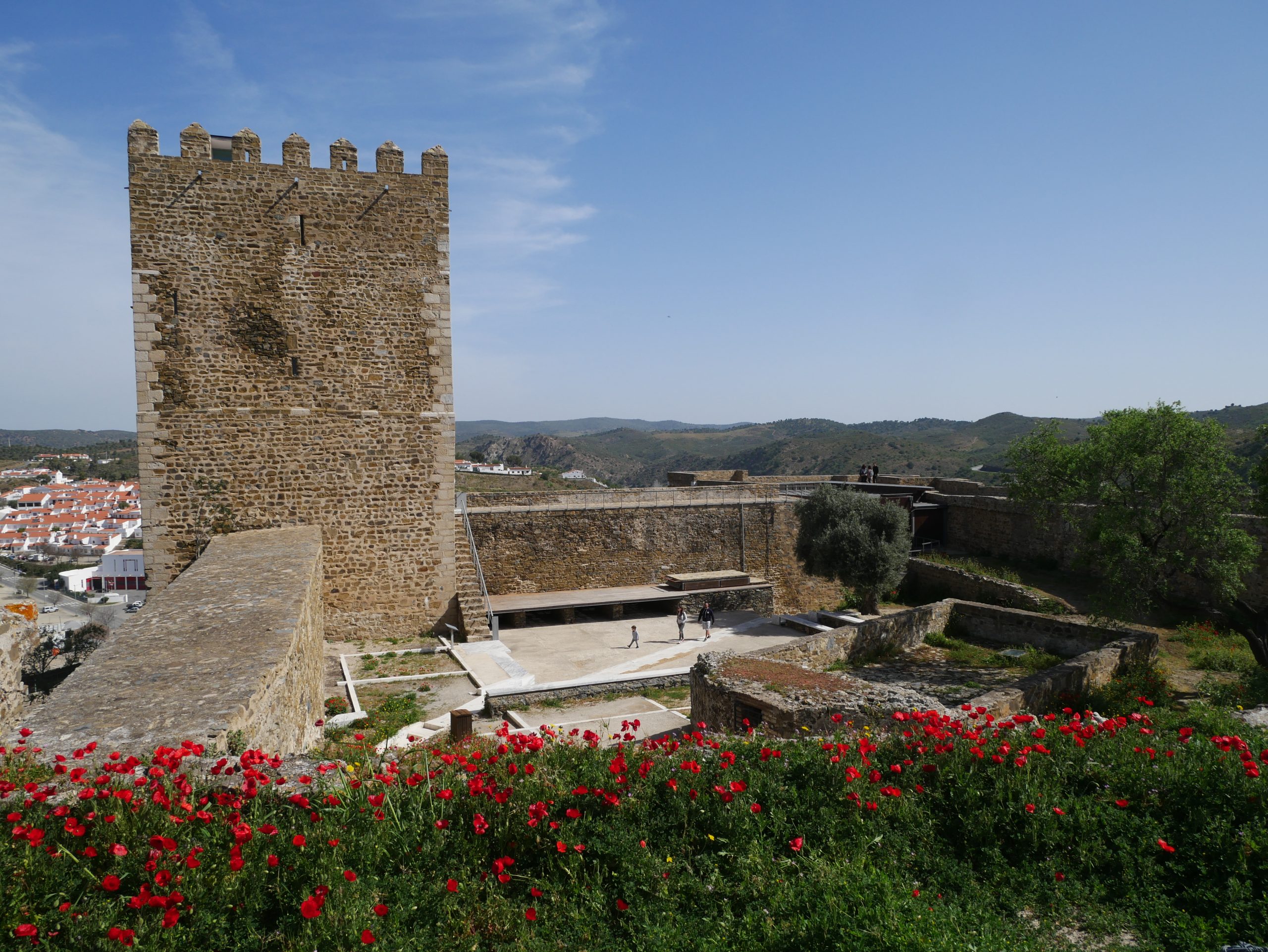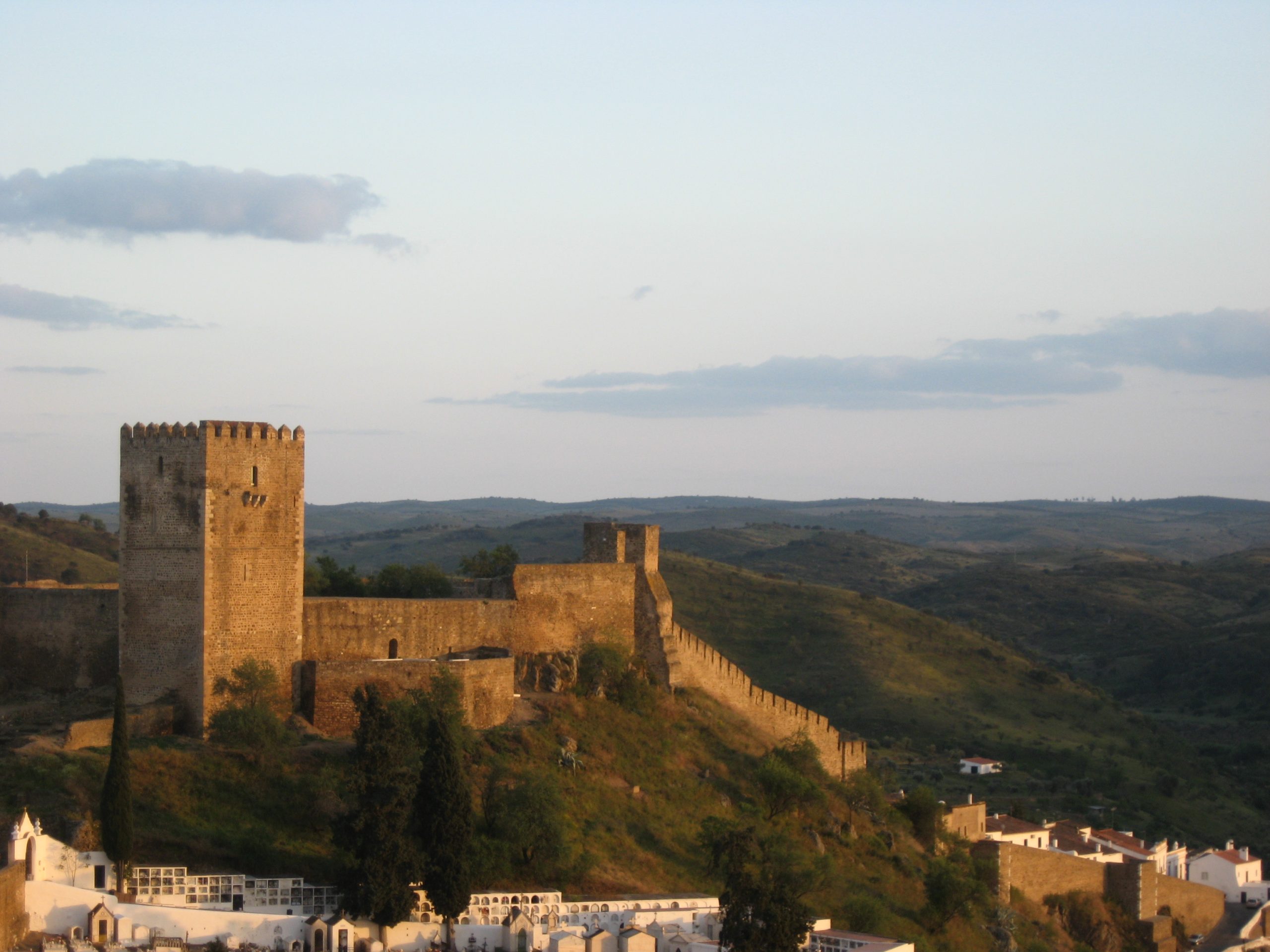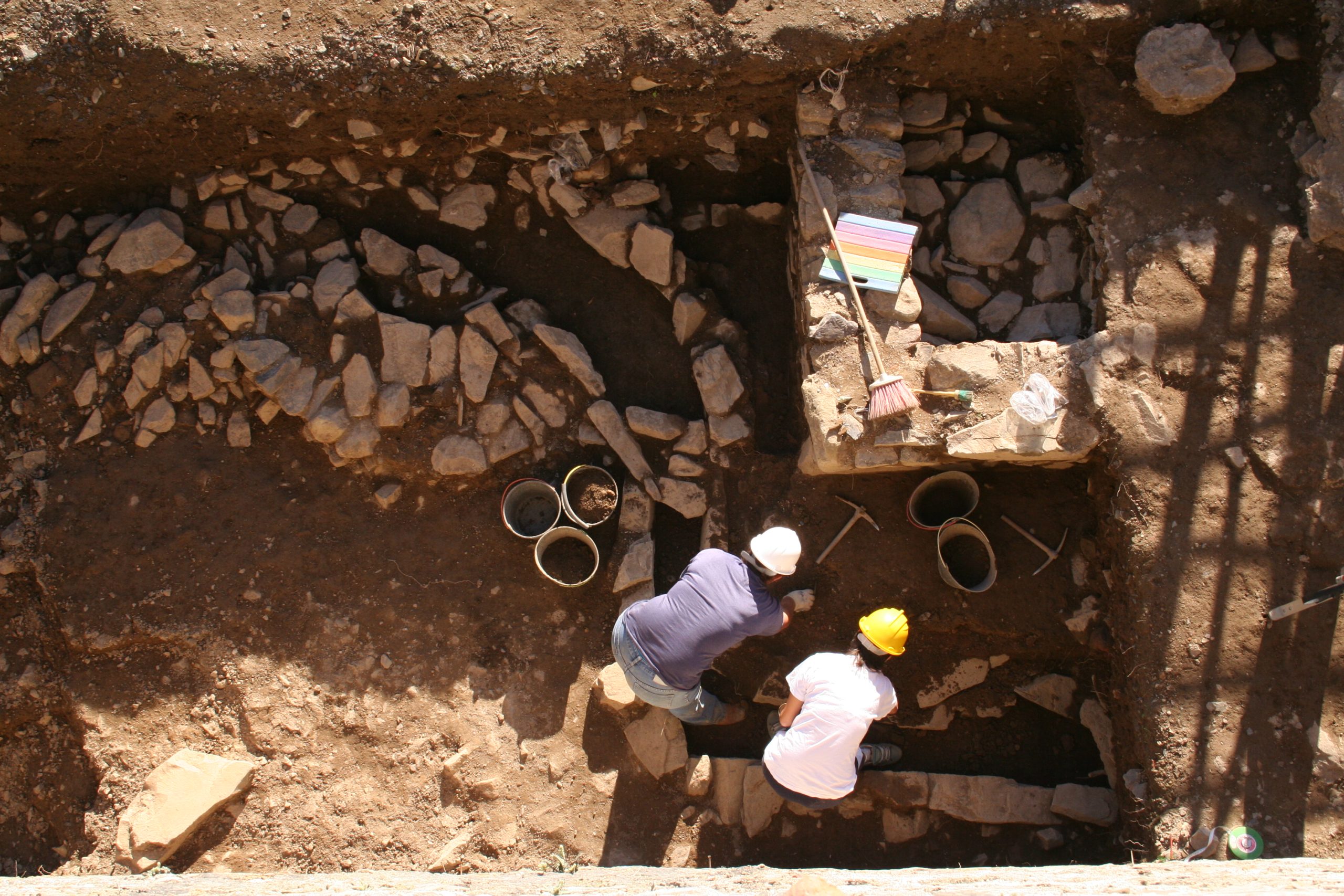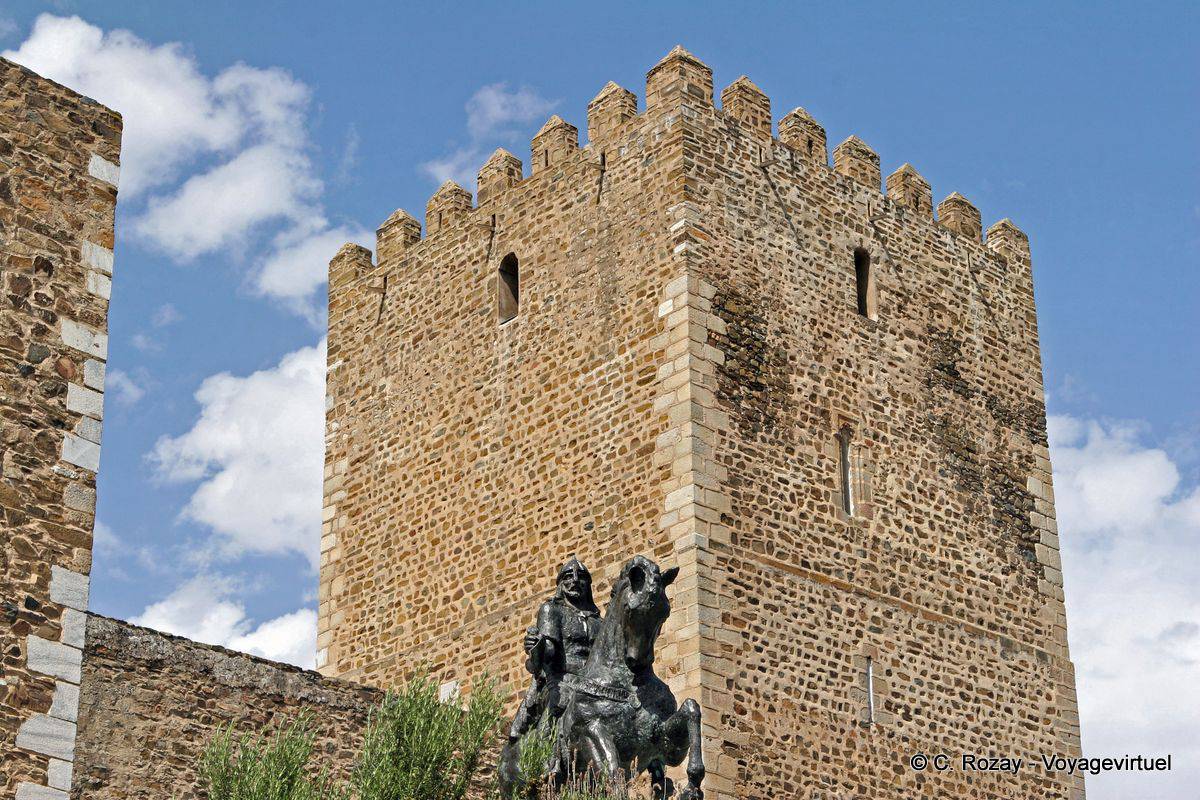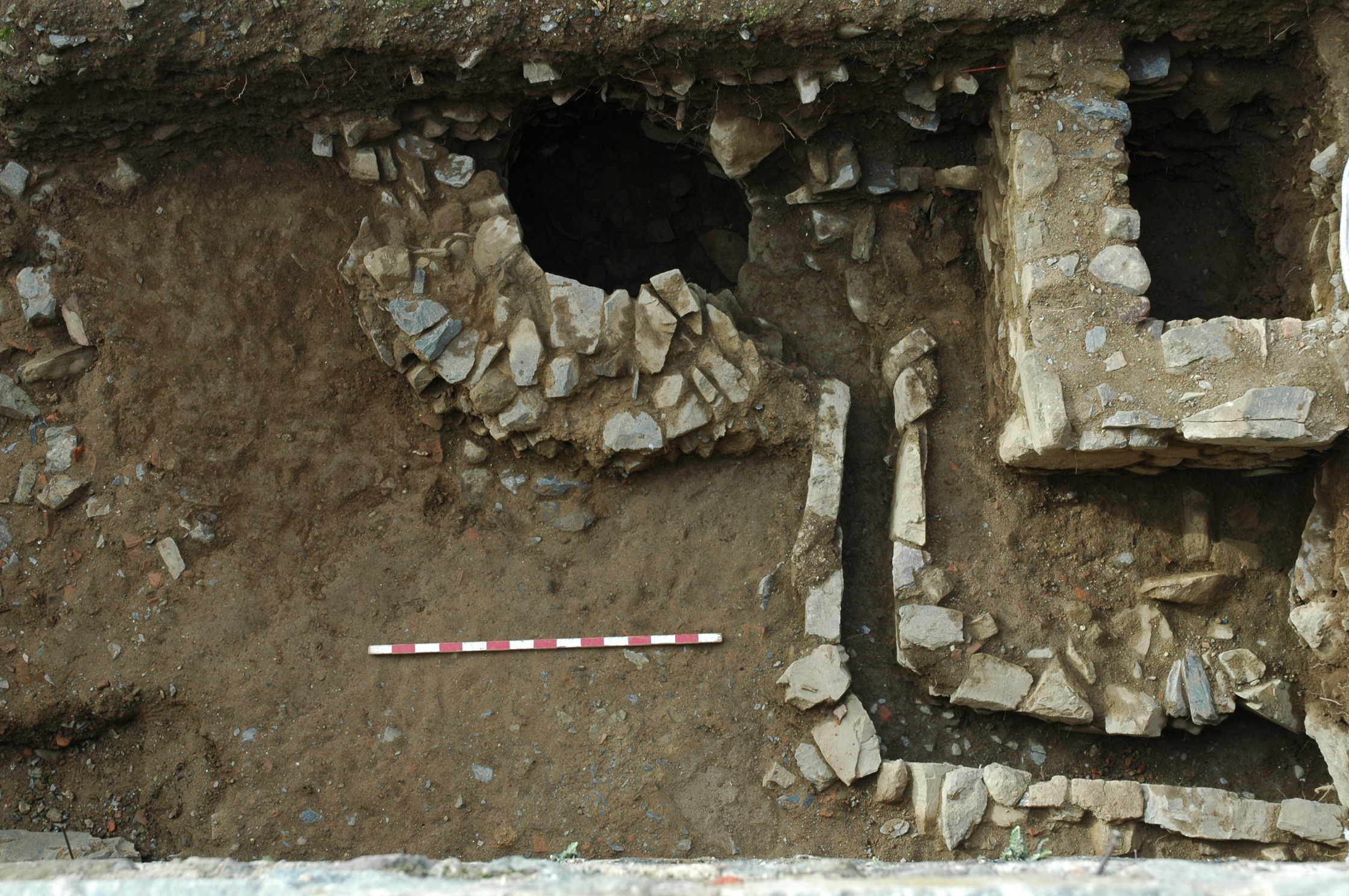Mértola
Castelo de Mértola
37º38'17.33"N / 7º39'51.92"O
Tuesday to Sunday
Morning: 9:10 AM to 12:30 PM / Afternoon: 2:00 PM to 5:20 PM;
Closed on Mondays and on national holidays (January 1st, May 1st, Easter Sunday,
and December 25th), and on December 24th (Christmas Eve).
About
Castel
The place where Mértola Castle now stands may have been occupied by a defensive structure since the Iron Age, but this has not been proved by archaeology. The first written reference to Mértola Castle dates from the 9th century and says reinforcement works were conducted in this military structure – which already existed then.
The entrance is made through an elbow-shaped door from the Almohad period (1171), addorsed to another, simpler one, built between two turrets in the Emirate period (9th century). The now-gone Chapel of Santiago do Castelo was built above this entrance after the Christian conquest of Mértola in 1238. Inside the building, there is a cistern, remains of the Alcaidaria (governor’s house) – represented in one of Mértola’s views drawn by Duarte D’Armas in 1509 – and the 27-meters-tall donjon, which was commissioned in 1292, during the reign of King Dinis, by D. João Fernandes, the first master of the Order of Santiago in Portugal, Commander of Mertóla, and High Commander of Portugal. Mértola Castle was the first Portuguese headquarters of this military order until 1316, when it was transferred to Alcácer do Sal.
Access
Prepare your visit
Free entrance.
Children should always be accompanied by a responsible adult.
Reduced mobility
It is not accessible to people with reduced mobility (wheelchairs and baby strollers) due to several architectural obstacles.
Guided tours
It is possible to book a guided tour to this space for groups of over 10 people, but you must book IN ADVANCE, at least 48 hours before. Contact the Mértola Tourism Office (286 610 109).
3D SURVEY
Support
RESEARCH
Bibliography & useful links
BOIÇA, Joaquim Manuel Ferreira (1998). Imaginária de Mértola: tempos, espaços, representações, Campo Arqueológico de Mértola, Mértola, pp. 55-57.
BOIÇA, Joaquim Manuel Ferreira; BARROS, Maria de Fátima Rombouts de (2013). O Castelo de Mértola, Estrutura e Organização Espacial (sécs. XIII a XVI), In Mil Anos de Fortificação na Península Ibérica e no Magreb (500-1500), Actas do Simpósio Internacional sobre Castelos, Edições Colibri, Palmela, pp. 579-586. Disponível em: Consultar Artigo Completo → [Consultado a 29/03/2023].
BOIÇA, Joaquim Manuel Ferreira; BARROS, Maria de Fátima Rombouts de (2013). O Castelo de Mértola. História, Espaço e Formas, sécs. XIII-XXI, Câmara Municipal de Mértola, Mértola.
BOIÇA, Joaquim Manuel Ferreira; MATEUS, Rui (2014). Mértola: Roteiro de história urbana e património. Associação de Defesa do Património de Mértola, Mértola, pp. 74-75.
GÓMEZ MARTÍNEZ, Susana, coord. (2014). Museu de Mértola. Catálogo Geral, Campo Arqueológico de Mértola, Mértola, pp. 84-99.
GÓMEZ MARTÍNEZ, Susana (2022). Poblamiento Emiral en el Garb Al-Andalus. In Arqueologia & História, A Península Ibérica entre os séculos V e X – Continuidades, Transição e Mudança, 73, Associação dos Arqueólogos Portugueses, Lisboa, pp. 187-206. Disponível em: Consultar Artigo Completo → [Consultado a 27 de março de 2023].
VEIGA, Estácio da (1983). Memória das Antiguidades de Mértola, Edição fac-similada de 1880. Imprensa Nacional / Câmara Municipal de Mértola, Lisboa, pp. 150-151.
TORRES, Cláudio; BOIÇA, Joaquim Manuel Ferreira; PASSINHAS, Manuel; LOPES, Virgílio (1991). Museu de Mértola, Núcleo do Castelo, Campo Arqueológico de Mértola, Mértola.
https://www.youtube.com/watch?v=4YyeG45CmQo
http://www.monumentos.gov.pt/site/APP_PagesUser/SIPA.aspx?id=1045
https://arqueologia.patrimoniocultural.pt/index.php?sid=sitios&subsid=47540
https://www.museudemertola.pt/nucleos-exposicao/castelo-de-mertola/
http://patrimonioislamico.ulusofona.pt/detalhe.php?id=448
https://www.visitportugal.com/pt-pt/content/castelo-de-m%C3%A9rtola
https://fortalezasdefronteira.turismodeportugal.pt/pt-pt/node/81
https://cimbal.pt/pt/12780/castelo-de-mertola.aspx
https://www.castelosdeportugal.pt/castelos/Castelos(pre)SECXII/mertola.html
